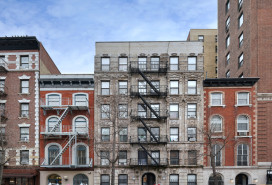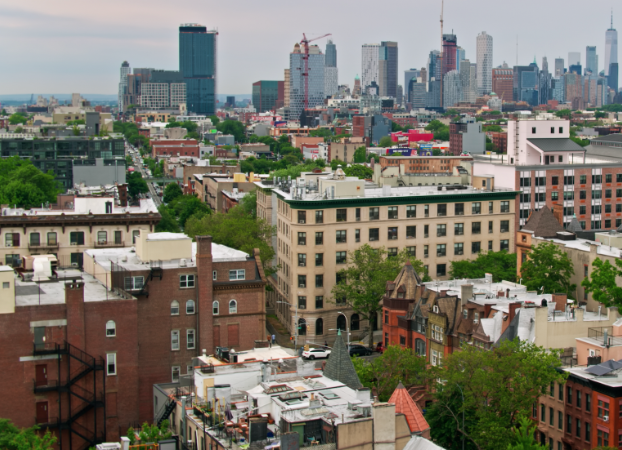Is NYC eating its own tail? How the city's economic success could be doing harm to its character
Major urban centers like New York and San Francisco are increasingly becoming inaccessible to all but the wealthy, the New Yorker reports, and the soaring costs of housing in these big cities could be dramatically restructuring how they look.
Urban planners of the previous decades failed to project how desirable city living would become, writes journalist Mark Gimein. Many expected that Americans would flee overcrowded metropolises for the suburbs or for “edge cities,” smaller cities on the outskirts of larger ones—think places like White Plains and Huntington. While the suburbs did experience population booms during the postwar era, at the same time, per New Geography, the United States became more metropolitan.
From 1950 to 2010, for instance, NYC added a staggering 6.9 million residents, and as early as the 1960s, rents were appreciating in the city at a rapid rate. (See this Curbed article to get a sense of just how quickly the cost of housing skyrocketed.) New York, rather than shrinking, grew into an economic powerhouse.
But today, it looks as though there’s a tipping point to intense growth, at which economic expansion stops being advantageous for everyone. Cities like NYC “actually provide decreasing opportunities for many of those who already live in them, or for those who move to them and are not already armed with resources, status, and education,” Gimein writes. Low-wage workers, deterred by astronomical rents, are no longer migrating to NYC, and a study from Harvard’s Equality of Opportunity Project finds that children growing up in low-income families can actually expect to earn ten percent less than their parents did.
Why is there economic immobility in a city as dynamic as New York? One problem is that wages have stagnated since 1973, as outlined in this New York Times op-ed; at the same time, the Curbed feature shows that average NYC rents jumped from $335 in the 1970s to $3,800 today.
When these factors collide, the city is rendered increasingly inhospitable to all but the rich, and the expense of living in places like New York snowballs as more wealthy people move in and pricey amenities—like upscale restaurants and retail—spring up to serve them.
Jeremiah Moss’ blog, Jeremiah’s Vanishing New York, has been perhaps the most vigilant chronicler of iconic city spots becoming casualties to shifting demographics. In one recent example, he writes that Greenwich Village’s Left Bank Books has been replaced, after 24 years, for a shop called Hawkins New York that describes itself as “born out of a palpable void in the lifestyle market for quality, accessible, home goods.”
So how can NYC be prevented from becoming a place of highly concentrated wealth, surrounded by rings of poorer exurbs? (Or, can it?) Gimein proposes two possible solutions: Build more housing, and entice the upper classes to move to other, smaller cities. The latter, he acknowledges, would be an extremely slow process, and the former provokes questions of what in NYC constitutes reasonable options for housing. Under Mayor Bill de Blasio’s affordable housing plan, Gothamist reports, 14,000 new units have already been built and 29,000 have been preserved—but 60 percent of those are rented to New Yorkers earning the area median income, which is between $39,000 and $62,000 for a family of three. New York’s AMI is inflated by the concentration of wealth in the city, and for residents who earn below it, the options are even more limited.
Can New York—and cities like it—save themselves from an unchecked influx of the super-rich? If urban centers don’t find a way to keep their own economic success in check, residents might start opting for alternatives like those “edge cities” after all.
You Might Also Like


























